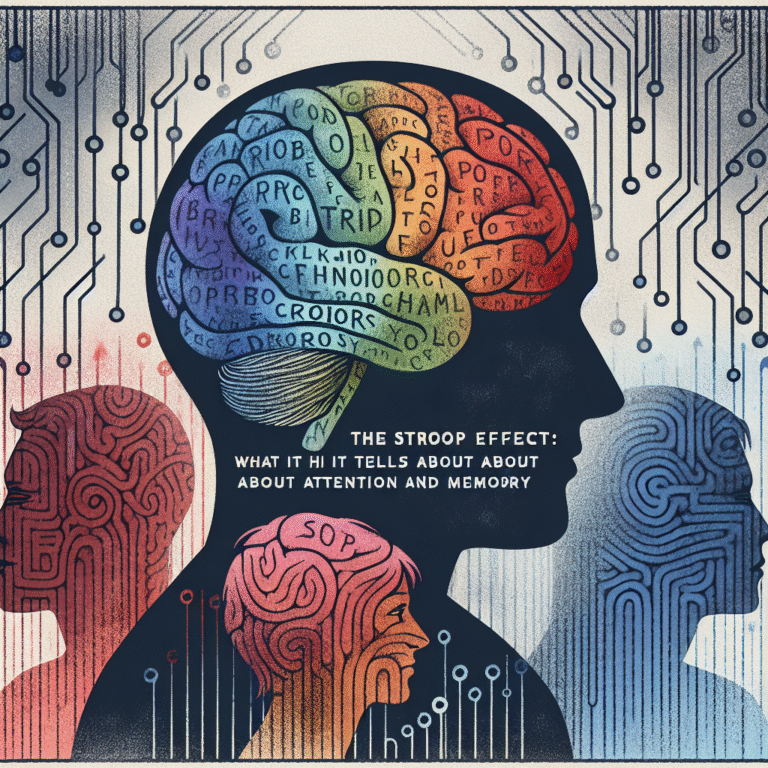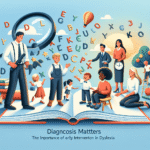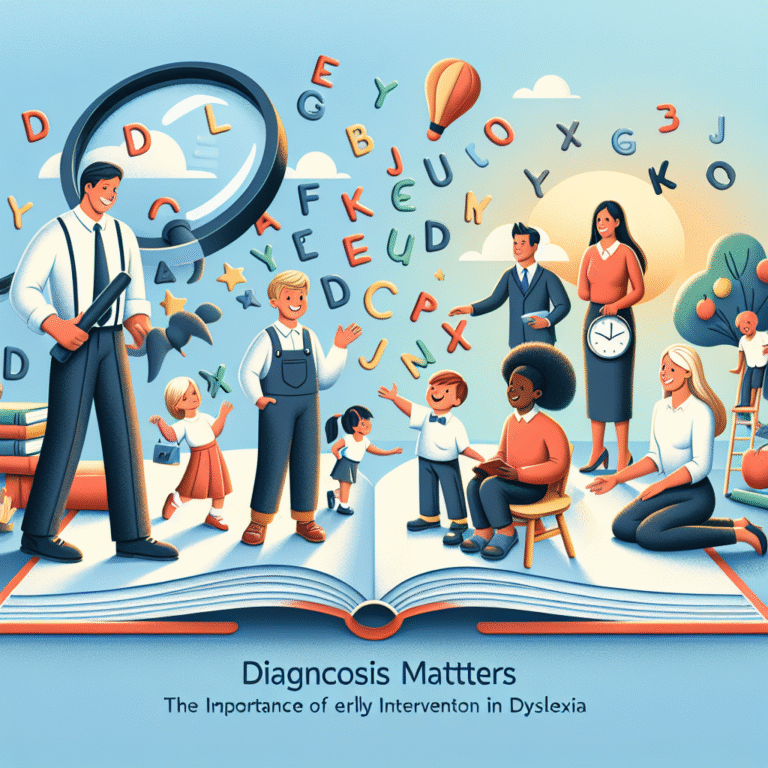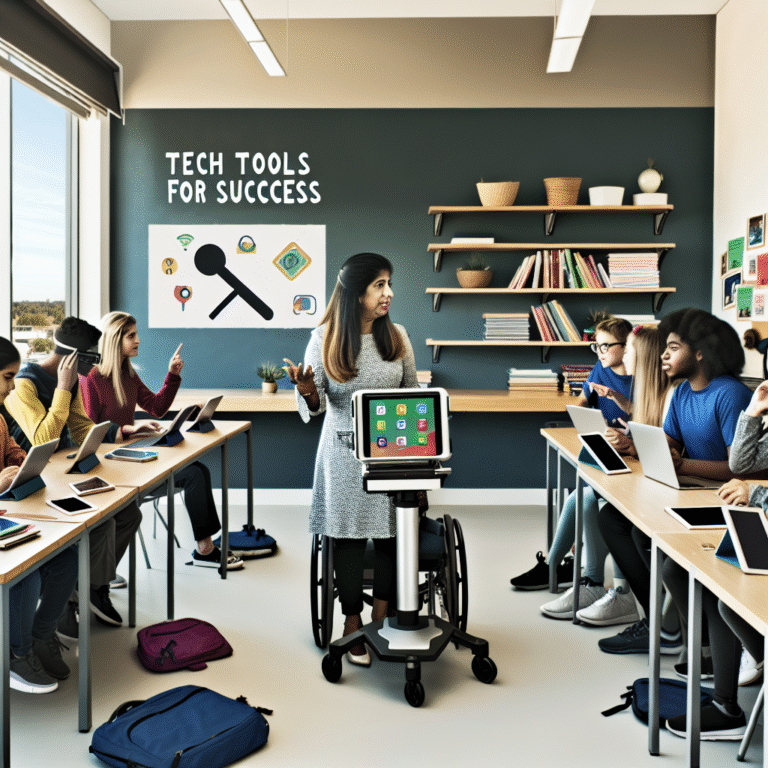
Introduction
Imagine walking through a bustling city street, vibrant with colors, sounds, and motion. Your attention flickers between the flashing lights of a storefront, the chatter of passersby, and the distant sound of an approaching siren. This incredible capacity to focus on specific stimuli, while filtering out distractions, is a remarkable human ability known as visual attention. In this article, “Beyond the Eye: Exploring the Neural Mechanisms of Visual Attention”, we will delve into not only how visual attention operates but also the complex neural networks that govern this essential aspect of human cognition. Understanding these mechanisms opens doors to improve our lives, from enhancing learning in educational settings to advancing treatments for attention disorders.
What is Visual Attention?
Visual attention can be defined as the cognitive process of selectively concentrating on one aspect of the environment while ignoring others. This process is crucial for processing visual information efficiently. Visual attention can be categorized into two types: overt attention, where eye movements are used to focus on a specific object, and covert attention, which involves mentally focusing without moving the eyes.
The Importance of Visual Attention
In a world bombarded by sensory information, the ability to manage visual attention is essential for survival. Our ancestors relied on this skill for hunting and gathering, maintaining vigilance against predators, and navigating complex social dynamics. Today, effective visual attention is integral for tasks ranging from driving to academic performance and work productivity. By exploring the neural mechanisms behind visual attention, we can better understand how to enhance these skills.
The Neural Basis of Visual Attention
To gain insight into visual attention, it’s crucial to examine the brain areas and neural pathways involved in this process. Here are some key components:
1. The Role of the Visual Cortex
The primary visual cortex (V1) is the first region in the brain that receives and processes visual information. Located in the occipital lobe, V1 is responsible for basic visual functions, such as detecting edges, movement, and colors. Research shows that the activity in V1 correlates with the level of attention given to a specific visual stimulus.
2. The Parietal Lobe and Attention
The parietal lobe plays a vital role in spatial attention, helping to interpret where objects are in the visual field. Specifically, the posterior parietal cortex is essential for integrating sensory information and determining where to focus attention. Damage to this area can lead to neglect syndromes, where individuals ignore stimuli on one side of their visual field.
3. Frontal Lobe Involvement
The prefrontal cortex is instrumental in higher-order cognitive processes, including decision-making and impulse control. It is intricately connected to areas involved in visual attention and helps guide the focus of attention based on our goals and expectations. This means that our attentional resources can be allocated more efficiently depending on the context.
4. Neural Networks and Attention
Recent studies illustrate how several brain regions collaborate through complex neural networks to facilitate visual attention. The fronto-parietal network, known for integrating sensory information with cognitive control, is particularly noteworthy. This network helps determine which stimuli warrant attention and which can be safely ignored.
Case Study: The "Spotlight Effect"
In a classic experiment, researchers asked participants to follow a moving object on a computer screen while ignoring distracting elements. Brain imaging revealed enhanced activity in the occipital and parietal lobes when participants successfully focused on the target. This study, pivotal in cognitive psychology, highlighted the "spotlight" metaphor for attention: just like a beam of light illuminates a specific area in a dark room, attention highlights specific stimuli in our environment.
Mechanisms of Visual Attention
1. Bottom-Up Attention
Bottom-up attention is driven by external stimuli—sudden movements, bright colors, or loud noises that capture our attention involuntarily. This reflexive attention helps in survival situations but can also lead to distractions in today’s fast-paced world.
2. Top-Down Attention
In contrast, top-down attention is driven by our thoughts, goals, and experiences. It is a deliberate form of attention where we consciously focus on specific information while ignoring irrelevant details. This form of attention is crucial for tasks that require concentration, such as studying for an exam.
The Interaction Between Bottom-Up and Top-Down Attention
Understanding the dynamic interplay between these two forms of attention helps refine our cognitive processes. The brain constantly assesses incoming stimuli, weighing them against our goals and context to decide what deserves attention.
Case Study: Attention in ADHD
Research into Attention Deficit Hyperactivity Disorder (ADHD) provides valuable insights into top-down attention mechanisms. Individuals with ADHD often struggle to maintain focus on tasks, even when they are personally relevant. Neuroimaging studies show disrupted activity in the fronto-parietal network, leading to difficulties in self-regulating attention. These insights inform interventions aimed at improving focusing capabilities in individuals with ADHD.
Visual Attention and Learning
Neuroplasticity and Learning
Neuroplasticity refers to the brain’s ability to reorganize itself by forming new neural connections. Engaging visual attention through targeted learning activities can enhance neuroplasticity, allowing new skills to develop.
Strategies to Enhance Visual Attention in Learning Environments
- Minimize Distractions: Creating a distraction-free environment aids in enhancing attention.
- Use of Visual Aids: Incorporating diagrams, charts, and images helps capture and direct attention towards crucial information.
- Mindfulness Practices: Activities like meditation can enhance attention span and cognitive control.
Case Study: Visual Learning Strategies in Education
A study involving middle school students revealed that those who employed visual learning strategies—like mind mapping and color-coding notes—demonstrated a marked improvement in material retention and engagement levels when compared to traditional study methods.
Visual Attention in the Digital Age
Social Media and Attention
In a digital landscape rife with notifications and distractions, understanding visual attention is more relevant than ever. Social media platforms exploit our attention networks to keep users engaged, often leading to cognitive overload. Research highlights how the rapid switching between tasks can diminish overall attention span and cognitive performance.
Tips to Manage Visual Attention Online
- Limit Multitasking: Focusing on one task at a time improves attention efficiency.
- Utilize Technology Wisely: Tools like website blockers can help minimize distractions during work or study sessions.
- Set Specific Goals: Clear objectives can aid top-down attention processes, guiding focus and enhancing productivity.
Case Study: Productivity Apps Effectiveness
An experiment on productivity apps indicated that users who set specific productivity goals displayed improved focus and reduced distractions, reinforcing the importance of structured attention management in a digital environment.
Future Directions in Visual Attention Research
Visual attention remains a burgeoning field of research, with various promising directions. Areas include:
- Neuroenhancement: Techniques like transcranial magnetic stimulation (TMS) are being explored to enhance attentional control in individuals with attention deficits.
- Machine Learning and AI: Understanding visual attention mechanisms can enhance user experience in technology, leading to smarter algorithms that adapt to users’ attention patterns.
Conclusion
In conclusion, “Beyond the Eye: Exploring the Neural Mechanisms of Visual Attention” reveals the intricate tapestry of cognitive processes that allow us to navigate our world with precision and intent. From our early ancestors’ survival needs to today’s demands for focus in an overstimulating environment, visual attention’s relevance remains undeniable. By leveraging the insights gained from studying the neural mechanisms behind attention, we empower ourselves to become more efficient learners, better communicators, and more effective problem solvers.
As you begin to apply these insights into your daily life, remember: the capacity to enhance your attention is within your grasp. By fostering an awareness of how visual attention functions, you can thrive in any environment.
FAQs Section
1. What is the difference between overt and covert attention?
Answer: Overt attention involves physically shifting your gaze to focus on a specific object, while covert attention allows you to concentrate on something mentally without moving your eyes.
2. How does visual attention impact learning?
Answer: Visual attention helps filter out distractions, enabling individuals to focus on relevant information, which is key for effective learning.
3. Can visual attention be improved?
Answer: Yes, through various practices like mindfulness, structured learning strategies, and minimizing digital distractions.
4. What brain regions are associated with visual attention?
Answer: Key regions include the primary visual cortex, parietal lobe, and prefrontal cortex, which together form networks for processing and directing visual information.
5. How does the digital age affect visual attention?
Answer: The constant influx of information on digital platforms can lead to cognitive overload, decreasing our attention span and efficiency unless managed effectively.
By strategically employing the insights gained from studying visual attention and its neural mechanisms, we can navigate our cognitive landscapes more effectively, leading to enriched lives both personally and professionally.

















